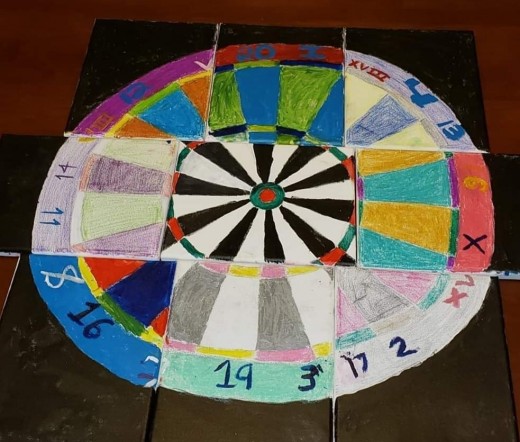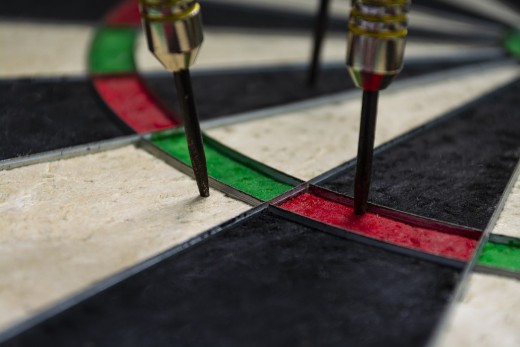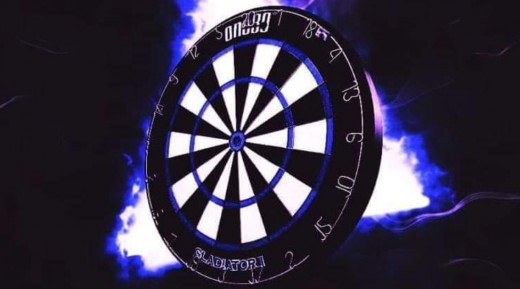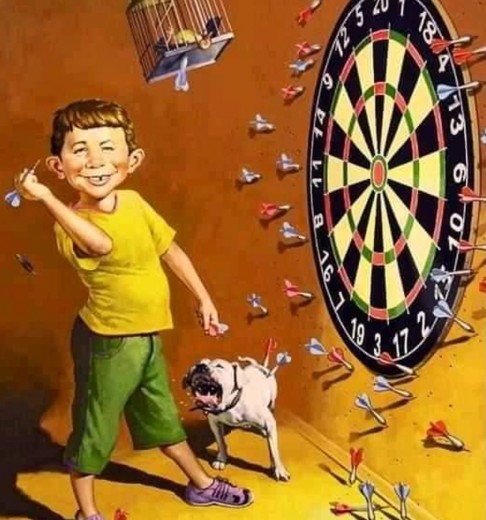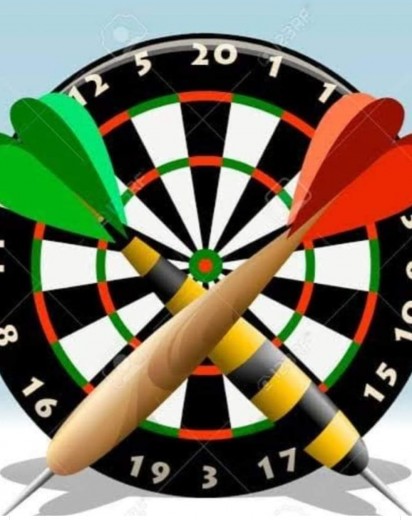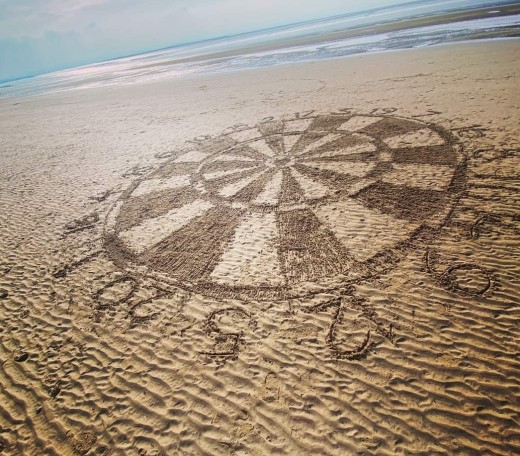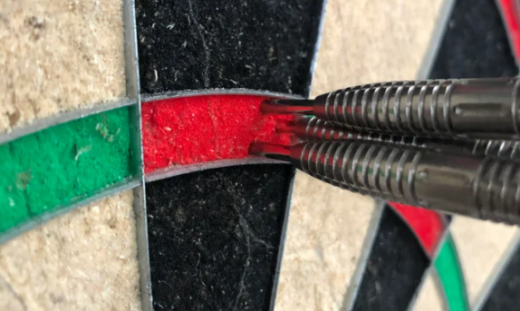Tuesday, May 16, 2017
Column HR195
Dinosaurs can be taught new tricks!
It’s an old axiom that, “A dinosaur can be led to water but you can’t make it drink.” While this may not be scientifically provable Shirley you can remember Fred Flintstone leading Dino to water…
He never drank.
Of course, you can lead a dart dinosaur to a bar – and he will drink.
True fact.
Another one of those axiom things is, “You can’t teach a dinosaur new tricks.” What’s true, kind of, according to radio talk show guy Dave Ramsey, is that “a dart dinosaur can be taught new tricks depending on the attitude of said dinosaur.”
This revelation struck home when the Old Dart Coach, who qualifies as an old dart dinosaur, visited the DARTSLIVE The World Stage #1 event held in Las Vegas last weekend. He was greeted with a sight that was a “Back to the Future” moment. There were men and women, boys and girls, representing 15 countries having fun – throwing a party and playing darts. That included the 199 world premier players who ponied up $150 to play in the main event.
Some of these people could be tagged with the title “Old Dart Dinosaur.” And they did indeed learn something.
Yanks learned that as the steel point game diminished in the USA focus began to switch to machine darts. The first to do this was the all-time great Jerry Umberger who recognized that “there’s gold in them there machines.” He was followed closely by Paul Lim who is the gold standard worldwide for machine darts.
Why the soft point game would just about eliminate the steel point game in North America is a mystery to some. As articulated by one veteran player (you call her an old dinosaur at your own risk), “You don’t have to know how to count, you don’t have to hit a double, in cricket the machine highlights open numbers, and the machine tells you what to throw. It’s too easy.”
Bing f’in O!
There are some dangers for a steel point player moving on to soft point. Watching a team game the ODC saw a rather tall male person in a “not really straw cowboy hat” attack his out in an interesting manner. With 40 remaining, the ODC thought and said to no one in particular, “Here comes the old double top, or 20, 20.” He then went into cardiac arrest when the player’s first dart hit the 13.
“What the hell?”
Then, the second dart hit triple 9. 13 plus 27 is 40.
“Bloody hell!”
A lady standing by said, “He loves that out.”
The “not old dinosaur” lady forgot one very salient element. Fr the most part, soft point players compete against those of equal talent. When that occurs either player actually has a chance of winning. Machine dart operators or vendors were smart enough to know that by leaving a little in the pot for the average player more revenue would result.
The power of the PDC is that they make it possible for the average really good player to make money. In addition to their big TV “majors” they have a Players Championship Tour and then a lower level Challenge Tour.
Most machine tournaments have likes playing likes. Within the DARTSLIVE system a player established a ranking by playing 40 league games. Prior to each game they insert an ID card and the results of their match are recorded. When machine darts first came on the seen there was a lot of sandbagging in regard to rankings. A DARTSLIVE official shared his opinion that using 40 league games to establish rankings while perhaps not eliminating sandbagging at the very least cuts it to the minimum.
Beside the World 1 singles for the elites the DARTSLIVE event had a plethora of other events for one’s darting pleasure. Within each event were divisions where players were separated by their ranking number. That stopped one team from stacking which meant you played against those of equal talent. Was there some sandbagging? Probably. although it wasn’t noticeable.
(As the ODC was in the throes of multi Coronas, no Miller Genuine, don’t hold him accountable for 100% accuracy.)
The team game was comprised of 4-person teams playing best of five. To level the playing field the 4 players could not exceed 27 ranking points. So like the Chinese dinner menu special the team took one player from column “A,” one from “B,” one from “C,” and one from “D.” The event ended with a “draw” triple where the teams were made up of one player from each of three designated groups. Heck of a deal.
American Alex Reyes, from the heart of Texas, took the grand prize when he defeated Harith Lim (Singapore) with the win being worth $16,000. Harith collected $6,000 as the runner up. Reyes reached the final when he defeated Paul Lim (SingAmerica) in a match that could have gone either way. Harith bested Yank Darren “Big Daddy” Young in his semi. The Yanks did good with three of the top four. Next stop for DARTSLIVE is Stage 2 in France, June 16-18.
Reyes probably takes the lead for 2017 as Grand Champion. Last year, he finished third to Grand Champion Paul Lim.
For years, steel point operated under a different philosophy. The theory was that by offering a larger first place purse it would encourage the average player to work harder to improve, pay his or her dues – by entering – and “voilà!” – the sport would grow. The dart leadership was comfortable with local leagues spending the entire year raising money for their tournaments only to see outsiders come in, take the money, enjoy the hospitality, and leave without a good-bye.
Eventually locals came to the conclusion that it was a waste of time and effort, so many packed it in. Along came machined darts for fun.
The attitude of some of the top players didn’t help a great deal. They were haughty and self-absorbed giving narcissists a bad name. “We have to make a living,” was an oft-heard phrase. It never occurred to them that average players who worked and had a families didn’t really cotton to the philosophy that their goal in life was to pay for someone else’s activity.
Steel darts has to come up with a method of ranking players and allowing them to play against their equals. As important, the game in the USA needs an organization that will recognize this fact and then develop and implement a program. Trickle-down economics works but trickle down darts – where the really good are compensated on the backs of the average – will never work. There’s far more “average” then “really good.”
The ODC was sitting and chatting with his longtime pal Julie on Sunday afternoon. A young player wearing a t-shirt with the name “Travis” over his heart approached…
“Are you somebody?” he asked.
“No,” replied the ODC.
“I thought you were because I saw you talking to Carol Lundberg yesterday.”
Darn, after 7 years of college, capped teeth, eye surgery to eliminate glasses, and dyed hair the ODC only last weekend found out the key to “being somebody” was knowing Carol Lundberg from Portland, Oregon.
“Now they tell me,” he was heard to mutter.
He does know Carol and Hammer Lundberg. Even sold them a book so they’re aces as far as he is concerned – and they may appear in his next..
Stay thirsty my friends.

